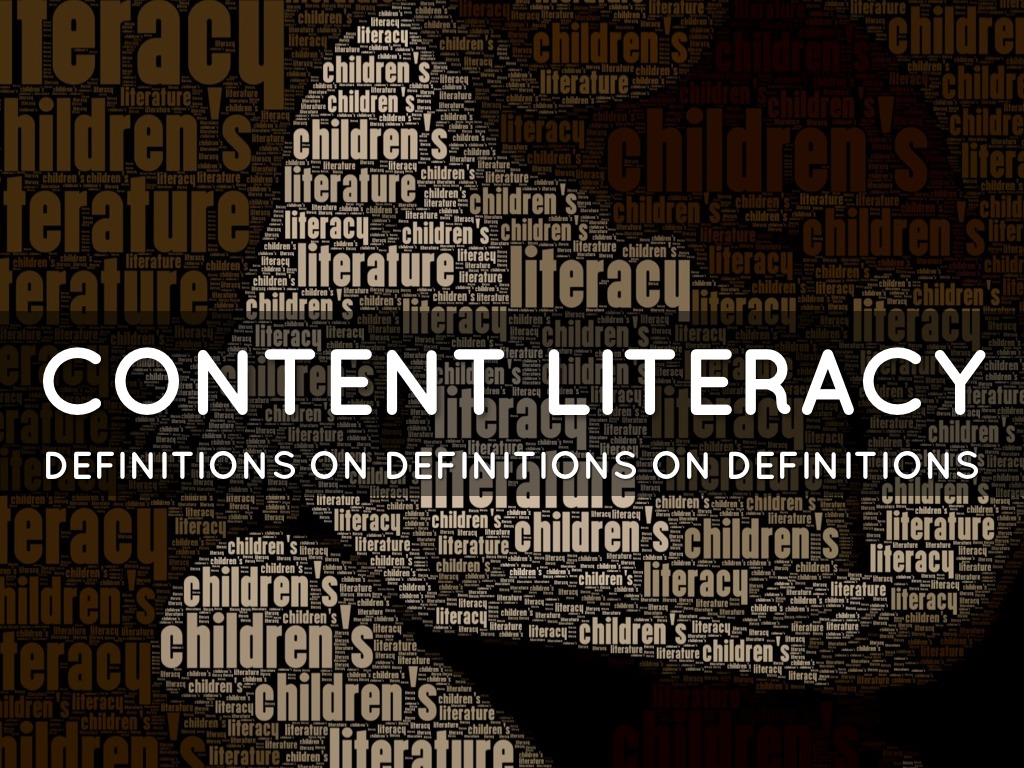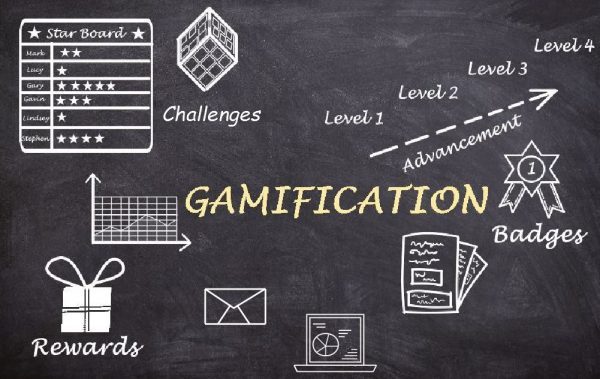For our Week 1 DIscussion, we were to watch 3 videos from the resources linked below, the “Teaching Content through Literacy,” “High School Reading Strategies,” and one from the Massachusetts Department of Education (our choice).
We were to collect and share at least three examples of when we saw the educator in the video teaching their content through one of the four areas of focus of literacy skills: reading, writing, speaking, and listening. Our task was to share what we observed the teacher and the students doing and how we knew if the differentiated literacy activity was effective. Where needed, we were asked to critique and suggest something the teacher could have done better to be more inclusive to support individual language and literacy goals and how interventions could be offered to help with reading difficulties. For this assignment we had to answer the following questions:
- Was the teacher inclusive in supporting literacy skills?
- How was s/he inclusive?
- What could s/he have done better to include all the students?
Video 1: Teaching Content Through Literacy
Examples of Literacy Skill Integration in the Video
The teacher effectively incorporated reading skills by helping students identify nonfiction text features in their science books. Students were encouraged to explore words, graphic organizers, tables, diagrams, captions, and pictures and scan their textbooks for nonfiction text examples. This differentiated approach helped students understand literacy beyond conventional written words by recognizing and comprehending diverse forms of information. In addition to engaging students in identifying nonfiction elements, encouraging peer-to-peer learning and reinforcing comprehension could enhance the reading experience.
The teacher skillfully integrated speaking and listening activities by prompting students to share their discoveries of nonfiction text features. Through verbal communication, the teacher created a dynamic learning environment where students were actively involved by explaining timelines, diagrams, and graphic organizers. Students could share their thoughts and insights by participating in this speaking and listening activity. While the teacher effectively promoted verbal engagement, structured turn-taking or peer feedback sessions could have further enhanced the listening and speaking experience, fostering a collaborative environment where students can learn from each other. By doing this, students improve their oral communication skills and ability to listen and respond to their peers.
Writing skills were seamlessly integrated by emphasizing keywords in nonfiction texts. To connect this concept to the students’ essential question about photosynthesis, the teacher had them do a writing activity where they identified keywords. For this writing task, students practiced summarizing skills and focused on essential information within the lesson context. While the teacher effectively guided students in connecting written language to content comprehension, incorporating extra writing support, like templates or sentence starters, could enhance inclusivity by providing extra assistance to students with varying language proficiency levels. Sharing students’ written responses could also promote a collaborative writing community, which promotes language development and content understanding.
Inclusivity in Supporting Literacy Skills
Recognizing that literacy goes beyond words, the teacher engaged students in identifying nonfiction text features, like words, graphic organizers, tables, diagrams, captions, and pictures. This inclusive approach catered to different learning styles and let students with different strengths and preferences participate. Further enhancing inclusivity, the teacher could have incorporated more collaborative elements, encouraging students to share and learn from each other. In addition, scaffolding techniques, like sentence frames or templates, would have offered extra support, especially for students with different language levels. Despite these considerations, the teacher’s efforts to make literacy a multifaceted part of the science content showed they were committed to inclusivity.
Video 2: High School Reading Strategies
Examples of Literacy Skill Integration in the Video
The students engaged in reading literacy by identifying keywords and concepts in the text. The teachers helped students figure out what the words and concepts meant by reading a passage about family rules. Students were encouraged to explain their choices by clustering words into terms. As a result, their reading comprehension improved, and they learned how to identify and extract key information.
Writing skills were incorporated by showing students how to craft open-ended questions about a text. By asking students about a chapter in their textbook, teachers stressed the importance of using the 5% of terms and phrases related to that chapter. This writing activity teaches kids to formulate thoughtful questions and capture distinctive content within a specific context. The emphasis on open-ended questions promotes critical thinking and a deeper understanding of the material.
Students were guided in summarizing a text through speaking and oral communication. After reading a paragraph, the students were prompted to condense the information into a concise sentence. In addition, students were encouraged to discuss the text with each other. Speaking exercises like this not only improve students’ ability to articulate ideas succinctly but also let them exchange perspectives. As a result of the interactive nature of the discussion, both speaking and listening skills improved.
Observations
I observed both teachers implementing differentiated literacy strategies effectively. Students collaborated on background knowledge, grouped keywords to foster vocabulary interaction, and answered open-ended questions about chapter terms. Students were paired for collaborative reading and summarizing, fostering social literacy skills. They read aloud, summarized, and answered questions, demonstrating improved reading comprehension and critical thinking. Collaborative vocabulary learning showed the positive group dynamic created by the teachers. Differentiated literacy activities led to active reader engagement, appreciation for word walls, and successful transfer of reading strategies. As a result of the collaborative efforts of both teachers, students became better readers.
Inclusivity in Supporting Literacy Skills
Students learned vocabulary through building background knowledge, using words in context, grouping keywords, and interacting. The teachers paired students to read to one another, offered explicit instruction on tackling complex texts, and used graphic organizers to organize thoughts. To enhance inclusivity further, the teachers could have provided more opportunities for students to share ideas through group discussions and presentations. Furthermore, differentiated instruction tailored to individual needs could have been incorporated, allowing for varying levels of support.
Video 3: 8th Grade Math
Examples of Literacy Skill Integration in the Video
At 1:30, the teacher gives students a reading activity about graphs by asking them to read a passage and answer questions. As a platform for developing students’ reading comprehension skills, this exercise encourages them to extract key information from the text and apply it to graphing problems.
Students are asked to write a paragraph about how to find the slope of a line from a graph at 6:00. In addition to strengthening their understanding of mathematical concepts, this activity helps them improve their writing skills. Students are challenged to express mathematical ideas clearly and organize them by writing them down.
The teacher takes a communicative approach at 11:00 and asks students to explain how to find the y-intercept of a line. This dynamic speaking activity fosters collaborative learning and oral communication skills. In this classroom, students are challenged to share their understanding, which enhances their speaking and listening skills.
The teacher uses various strategies, like graphs and diagrams, in addition to these specific examples, to enhance students’ comprehension. By constantly asking questions, the teacher fosters critical thinking. Overall, the video shows how the teacher uses diverse strategies to engage students in the learning process and facilitate their comprehensive development in the four literacy skills — reading, writing, speaking, and listening.
Observations
As part of a differentiated literacy activity, students analyze a graph showing how much music CDs cost on average in small groups. The kids answer questions and discuss the rate of change, effectively developing their literacy skills. The students’ active engagement, accurate responses, and ability to discuss the concept show success. Fun and effective, the activity fosters dynamic learning.
Inclusivity in Supporting Literacy Skills
The teacher is committed to inclusivity by implementing effective practices to support literacy skills. She used clear, concise language that all students could understand, facilitating a comprehensible learning environment. Additionally, the teacher encouraged student engagement by providing helpful and informative answers to questions. Diagrams and graphs were used to enhance understanding, accommodating different learning styles. The teacher facilitated inclusive discussions during the class, supported struggling students, and created a participatory atmosphere.
Moreover, the teacher implemented a variety of literacy strategies. These included explicit instruction, where the teacher taught students how to read a graph and find the slope of a line. Hands-on examples and practice problems reinforced these skills through modeling and guided practice. Independent practice was also emphasized, including homework problems and real-world applications of literacy skills.
Despite these strengths, inclusivity could be improved. Some suggestions include small group work, incorporating more manipulatives and hands-on activities, letting students share their work with the class, and using technology to support literacy skills. These improvements could make the learning environment more inclusive and supportive for everyone.



